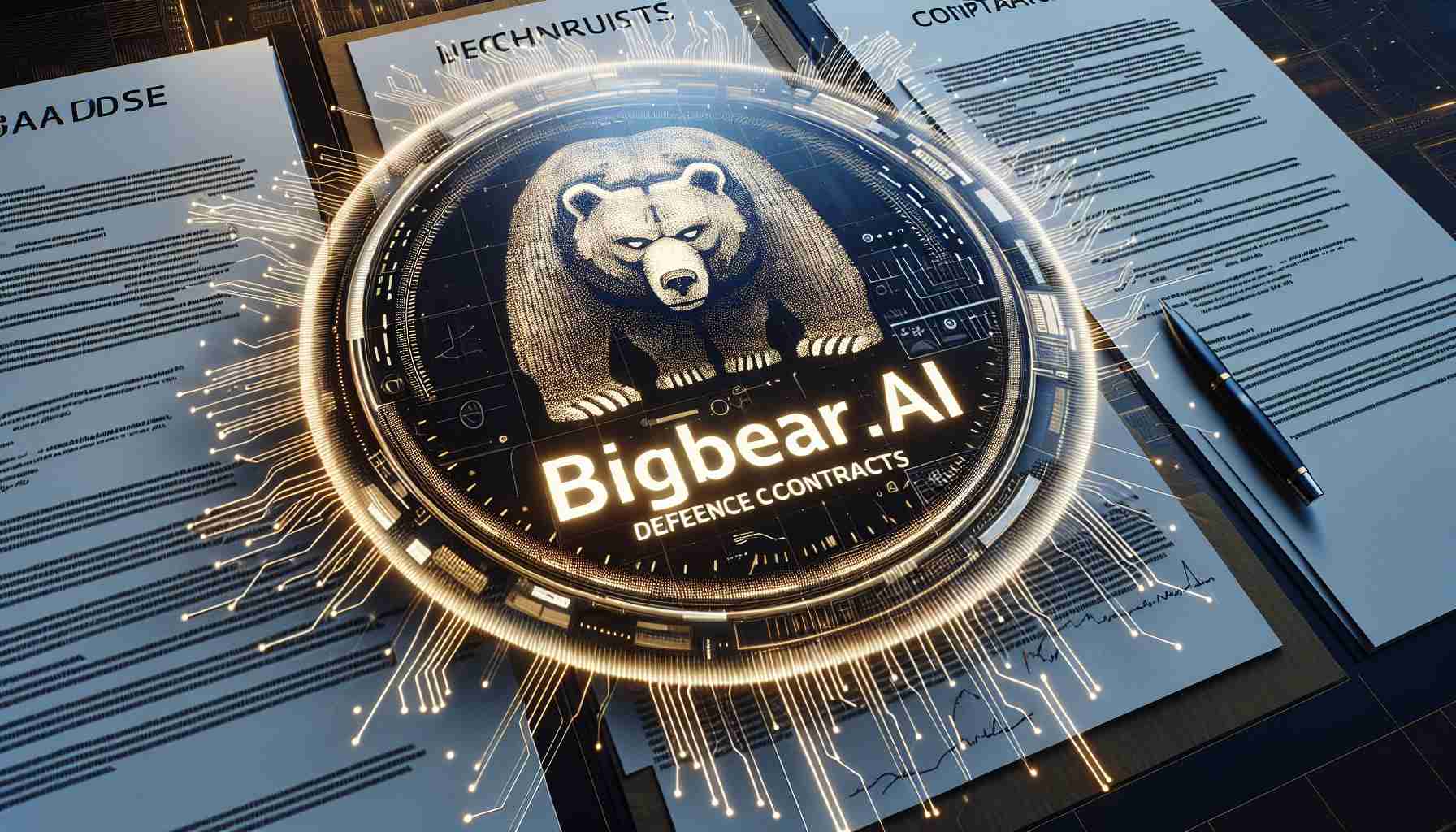- BigBear.ai’s stock surged by 23.4%, contrasting with declines in major indexes like the S&P 500 and Nasdaq.
- A partnership with Proof Labs to enhance cybersecurity for the U.S. Air Force boosted investor confidence.
- A 10-year contract with the U.S. General Services Administration was announced, aiming to overhaul acquisition processes.
- Despite general market unease due to Federal Reserve policies, BigBear.ai closed the week on a high note.
- Investors are advised to remain cautious amid mixed signals on government AI spending.
- BigBear.ai’s niche in AI-driven defense solutions underscores both potential growth and emerging challenges.
BigBear.ai has captured the spotlight with a remarkable leap in its stock value, defying the gloomy forecasts surrounding Federal Reserve policies. While the S&P 500 and Nasdaq indexes tumbled over 2%, BigBear.ai surged with a jaw-dropping 23.4% increase, affirming its strategic prowess in the defense sector.
The week kicked off with an electrifying announcement: a partnership with Proof Labs to shore up cybersecurity for the U.S. Air Force. This strategic alliance catapulted BigBear.ai’s share value, as investors quickly linked this move to lucrative defense contracts and the promise of technological prowess. But that was just the beginning.
By mid-week, the company unveiled its next big play — a 10-year contract with the U.S. General Services Administration. This deal aims to revolutionize acquisition processes across civilian and military spheres, solidifying BigBear.ai’s imprint on governmental tech procurement. Although broader market concerns hinted at hiccups due to Federal Reserve policies, BigBear.ai closed the week triumphantly.
Despite Federal Reserve indications of cautious future interest rate cuts, BigBear.ai stands as a testament to the rising importance of AI in defense. Yet, investors should tread carefully; mixed signals about government AI spending suggest that while the current wins carve a promising path, challenges loom.
BigBear.ai’s upward trajectory sets it apart from competitors, reflecting a strategic niche within the tech and defense domain. However, the unpredictable landscape of government investments necessitates vigilance. The evolving stakes in AI-driven defense solutions present both opportunities and hurdles, making BigBear.ai’s journey a captivating chapter to watch in the tech industry’s unfolding saga.
BigBear.ai’s Meteoric Rise: Opportunities and Challenges in the AI Defense Sector
New Insights on BigBear.ai’s Strategic Moves
BigBear.ai has achieved remarkable success, with a 23.4% increase in stock value, despite the broader market downturn. This growth can be attributed to strategic partnerships and long-term contracts that position the company at the forefront of AI advancements in defense. Let’s delve into the key questions and answers related to BigBear.ai’s recent achievements.
1. What are the key features of BigBear.ai’s partnership with Proof Labs?
The partnership with Proof Labs aims to enhance cybersecurity within the U.S. Air Force. This collaboration focuses on deploying cutting-edge AI solutions to protect sensitive information and infrastructure. This strategic move is a potential game-changer in defense technology, emphasizing the following features:
– Proactive Threat Detection: Implementation of AI-driven software for enhanced detection and response capabilities against cyber threats.
– Data Security: Enhanced encryption and security protocols to safeguard military data against unauthorized access.
– Military-grade Solutions: Development of customized cybersecurity solutions tailored to the stringent needs of military operations.
BigBear.ai
2. How does BigBear.ai’s 10-year contract with the U.S. General Services Administration impact its market position?
Securing a 10-year contract with the U.S. General Services Administration is a monumental step for BigBear.ai, promising to transform the acquisition processes for both civilian and military endeavors. This contract bolsters BigBear.ai’s market position by:
– Solidifying Government Ties: Strengthening relations with governmental bodies, increasing influence in public sector tech procurement.
– Driving Innovation: Leveraging AI to streamline acquisition processes, setting a precedent for tech-driven governmental operations.
– Revenue Stability: Ensuring a steady income stream over the decade, allowing for reinvestment and further innovation.
3. What are the potential challenges BigBear.ai might face in the evolving AI defense landscape?
While BigBear.ai’s recent achievements highlight significant opportunities, the company must remain vigilant to navigate potential challenges in the defense sector. These include:
– Volatile Government Spending: Fluctuating government investment in AI can impact future project funding and scalability.
– Competition Pressure: Emergence of new competitors in the AI defense space could affect market share and innovation pace.
– Regulatory Hurdles: Navigating complex regulatory frameworks may pose challenges in implementing solutions swiftly.
Conclusion
BigBear.ai’s rise in the stock market amidst challenging economic conditions underscores its strategic acumen in the AI and defense sectors. However, its journey is riddled with both opportunities and potential pitfalls. By staying adaptive and forward-thinking, BigBear.ai can continue to thrive in the dynamic tech landscape.
Learn more about BigBear.ai’s innovations and partnerships at their official website: BigBear.ai.
















